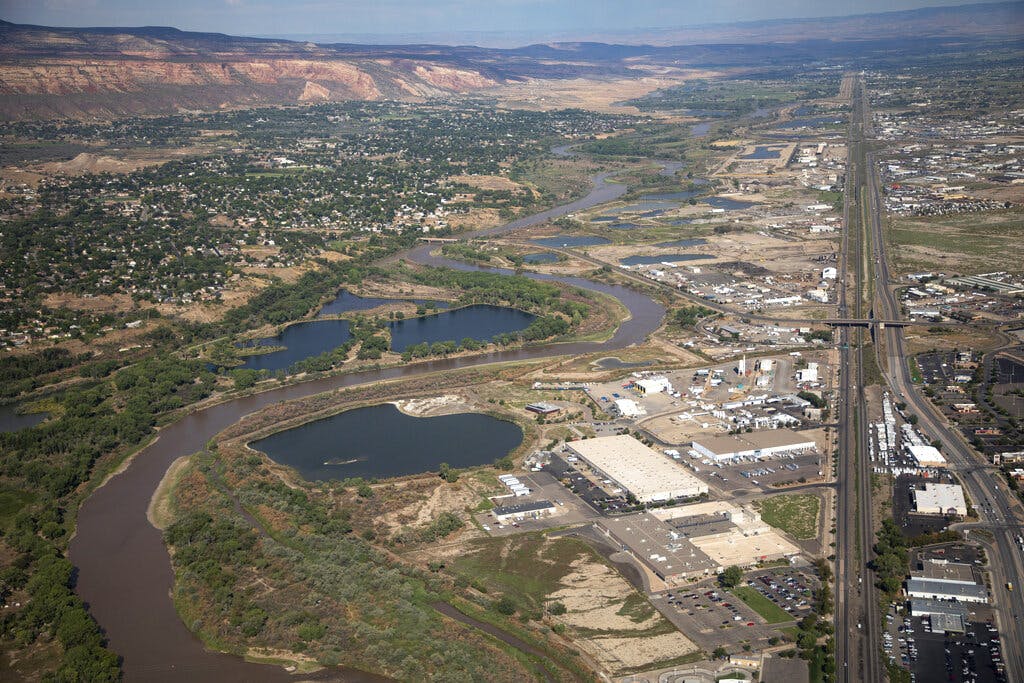Fate of Colorado River Could Hinge on Coming Supreme Court Case
The court’s decision would force the federal government to confront the uncomfortable reality that there’s not enough water in the river for everyone.

Later this month, the Supreme Court will hear a case in which the Colorado River water crisis will collide with centuries old treaties between America and the Navajo Nation. The case, Arizona v. Navajo Nation, hinges on the idea of implied water rights, with the Navajo position being that the American government, in promising the Navajo land for farming, also promised them the water to keep that land arable.
The Navajo argue that treaties signed in 1849 and 1868 that allowed the Navajo to return to their homeland to “raise crops and livestock” also “included a promise to provide the water needed to make their way of life on the Reservation possible.” The tribe is hoping that the high court will answer the question of whether the federal government, based on these treaties, has a duty to “assess the Navajo Nation’s water needs and develop a plan to meet them.”
If the court agrees that the American government has a duty to ensure the Navajo receive ample water for their land, then the government would be responsible for measuring the amount of water they are entitled to and putting a plan in place to deliver it.
A reality both parties must grapple with is that the 1922 Colorado River Compact provides for the distribution of more water than actually flows through the Colorado River. As the population and the agricultural industry in the Southwest grew over the past 100 years, the overestimation of water by the compact created problems in the Lower Basin.
The group of states that brought the case argue that the Navajo Nation does not enjoy this implied right to water and thus the Department of the Interior does not need to implement a plant to deliver water to the reservation.
Although it is long-established law that reservation land comes with the right to water for that land — a concept called Winters rights, established in Winters v. United States — there are a few complications.
The states — Arizona, Nevada, Colorado, and the Metropolitan Water District of Southern California — base their objection on the fact that the reservation land that lies in the Lower Basin of the Colorado River was not added until after the original treaties were signed, in 1934. They also contend that, because the Navajo’s water rights were not explicitly stated in any written statutes, the nation lacks standing, an argument that a district court agreed with.
The Ninth Circuit court, however, overruled the district court’s ruling, with Judge Ronald Gould referencing an earlier opinion on the same topic. “It is impossible to believe that when Congress created the great Colorado River Indian Reservation … they were unaware that most of the lands were of the desert kind — hot, scorching sands — and that water from the river would be essential to the life of the Indian people,” Judge Gould’s opinion reads.
The case has drawn the attention of other water users, including from the agricultural industry in the region via the Western Water Users and Trade Associations. In a brief opposing the Navajo Nation’s claim, the group argues, “it would inevitably reduce the amount of water available to other users in Arizona, with cascading negative consequences for the stability of water rights in that state and elsewhere.”
The group said that the Navajo Nation should instead seek remedies for their water issues through “traditional procedural avenues” instead of claiming that the government has broken the terms of a treaty.
Indian groups, like the Native American Rights Fund, have come out in support of the Navajo Nation’s claims. A staff attorney for the fund, Morgan Saunders, said that the government must recognize its “legal and moral obligations to fulfill its trust relationship with tribes.”
“We urge the Court to respect the well-established right of tribal nations who ceded millions of acres of land to the United States to have the United States protect the water needed for the remaining land that was reserved for tribal homelands,” Ms. Saunders said.
If the Supreme Court rules in favor of the Navajo Nation, it could mean that the Department of the Interior, which manages much of the river’s water supply, would likely be required to reallocate significant amounts of Colorado River water. This scenario would force the federal government, along with states that draw water from the river, to confront an uncomfortable reality that has come into focus in recent years: There’s not enough water in the river for everyone.
According to the director of Save the Colorado, Gary Wockner, the allocation of Colorado River water is “not even a zero sum game, it’s actually a negative sum game.”
“Battles like this court case are going to become the norm and we are going to see more chaos,” Mr. Wockner told the Sun. “Right now every single drop of water is drained and the river is bone dry and doesn’t even reach the Gulf of California.”

